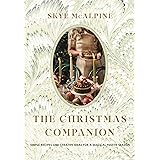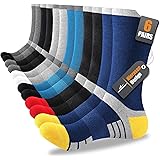Estimates suggest that transactional conversations constitute a significant portion of daily verbal interactions, underpinning our ability to navigate essential life activities. For intermediate English learners, mastering these pragmatic exchanges is crucial for achieving true communicative competence. The accompanying video offers an excellent auditory primer for **learning English through podcasts**, specifically demonstrating typical dialogues encountered during a supermarket visit. This foundational exposure provides practical vocabulary and phrasing, directly enhancing your **conversational English** skills in a vital real-world setting.
Engaging with scenarios like grocery shopping offers invaluable immersion, far beyond rote memorization. Effectively navigating the supermarket requires not only lexical acquisition but also an understanding of cultural nuances and appropriate communicative strategies. This comprehensive guide expands upon the video’s essential content, providing a deeper dive into the linguistic intricacies of **English for supermarket shopping**, preparing you for confident and autonomous interactions.
Navigating the Supermarket Landscape: Asking for Directions
Successfully locating items within a large retail environment hinges on effective spatial communication. While phrases like “Where can I find…?” are perfectly functional, expanding your repertoire enhances politeness and precision. Consider employing introductory phrases such as “Excuse me, could you direct me to the…” or “I’m looking for the…” when addressing store personnel.
Understanding common aisle classifications and product groupings is equally important for independent shopping. Supermarkets are typically organized into logical sections, which often include a dedicated produce section for fresh fruits and vegetables. The dairy aisle consistently houses milk, cheeses, and yogurts, while the bakery counter offers fresh bread and pastries.
Decoding Store Sections and Product Placement
The video highlighted key areas such as “aisle two” for fruits and vegetables and “aisle six” for dairy products. Beyond these specific examples, recognizing general categories streamlines your shopping experience. For instance, the “frozen foods” section and the “canned goods” aisle are universal designations.
Furthermore, many modern grocery stores feature specialized departments, catering to diverse dietary needs and preferences. An “organic section,” as mentioned in the video, signifies produce grown without synthetic pesticides or fertilizers, appealing to health-conscious consumers. Similarly, a “delicatessen” or “deli” offers sliced meats and cheeses, while a “seafood counter” provides fresh fish.
Mastering Product-Specific Vocabulary and Category Lexicon
The core of effective shopping communication lies in a robust vocabulary of goods and services. The video introduced a selection of essential items found in a typical supermarket, but a deeper understanding of product categories elevates your shopping prowess. Recognizing umbrella terms facilitates item identification, even if the exact product name is unfamiliar.
For example, while “apples” and “bananas” are specific fruits, understanding the broader term “produce” allows for more general inquiries. Similarly, “milk, cheese, yogurt, and butter” fall under “dairy products,” a vital category for both direct requests and dietary considerations. Expanding this lexical knowledge is paramount for achieving fluency in **English for supermarket shopping** contexts.
Expanding Your Supermarket Lexicon
Beyond the individual items mentioned in the transcript, such as “carrots” or “tomatoes,” consider the wider array of common produce. This includes leafy greens like spinach and lettuce, root vegetables such as potatoes and onions, and a variety of berries. Understanding terms like “fresh produce” versus “frozen vegetables” adds nuance to your requests.
In the bakery, options extend beyond “bread, rolls, and pastries” to encompass items like “baguettes,” “croissants,” and various “loaves.” For cleaning supplies, “washing powder, dish soap, and sponges” are standard, but knowledge of “all-purpose cleaner,” “laundry detergent,” or “paper towels” proves equally beneficial. These specific terms are crucial for targeted purchases.
The Checkout Experience: Achieving Transactional Fluency
The checkout process represents the culmination of the shopping journey, demanding precise and polite transactional dialogue. From understanding payment methods to requesting specific bag types, this stage is a critical test of your **conversational English** in a functional context. The exchange with the cashier, as demonstrated in the video, encapsulates several key linguistic patterns.
Modern retail environments often present multiple payment options and checkout modalities, requiring adaptable language skills. Understanding the difference between a “cashier” and “self-checkout” is essential for choosing your preferred method. Each option necessitates slightly different conversational cues and responses, reflecting diverse customer service approaches.
Navigating Payment and Bagging Options
When the cashier states, “That will be $22.50,” they expect a prompt decision regarding payment. Phrases like “By card, please” or “I’ll pay with cash” are direct and effective. The mention of “tap your card here” highlights the prevalence of contactless payment, a widely adopted technology requiring minimal verbal interaction beyond confirmation.
The inquiry, “Do you need a bag?” presents an opportunity to express preferences, such as requesting “a reusable one if possible.” This demonstrates environmental consciousness and a broader understanding of common consumer practices. Many stores now charge for single-use plastic bags, making this an economically and environmentally relevant phrase.
Beyond Basic Transactions: Enhancing Conversational English
While the video focuses on direct transactional exchanges, achieving advanced **conversational English** means moving beyond mere functional communication. Developing the capacity for polite inquiries, offering compliments, or even providing brief feedback enriches your interactions. This depth contributes significantly to your overall pragmatic competence.
Utilizing conversational fillers and politeness markers naturally integrates you into the cultural flow of English discourse. Incorporating phrases like “Excuse me,” “Please,” and “Thank you” is fundamental, but also consider subtle additions. These small linguistic elements contribute significantly to a more natural and fluent communication style.
Elevating Your Dialogue: Tips for Deeper Engagement
Beyond simply asking for an item’s location, consider questions about product attributes or recommendations. For instance, “Is this organic produce locally sourced?” or “Could you recommend a good cheese for a salad?” Such inquiries demonstrate engagement and invite more extended responses, providing further listening practice. This proactive approach strengthens your **conversational English** by initiating richer dialogue.
Practicing these expanded interactions, perhaps by role-playing or mentally rehearsing scenarios, significantly bolsters confidence. Remember, the goal of **learning English through podcasts** extends beyond passive listening; it’s about actively internalizing and applying the content. Applying these phrases in actual supermarket scenarios solidifies your understanding and improves your spontaneous speaking ability, directly addressing the core elements of **English for supermarket shopping** success.











